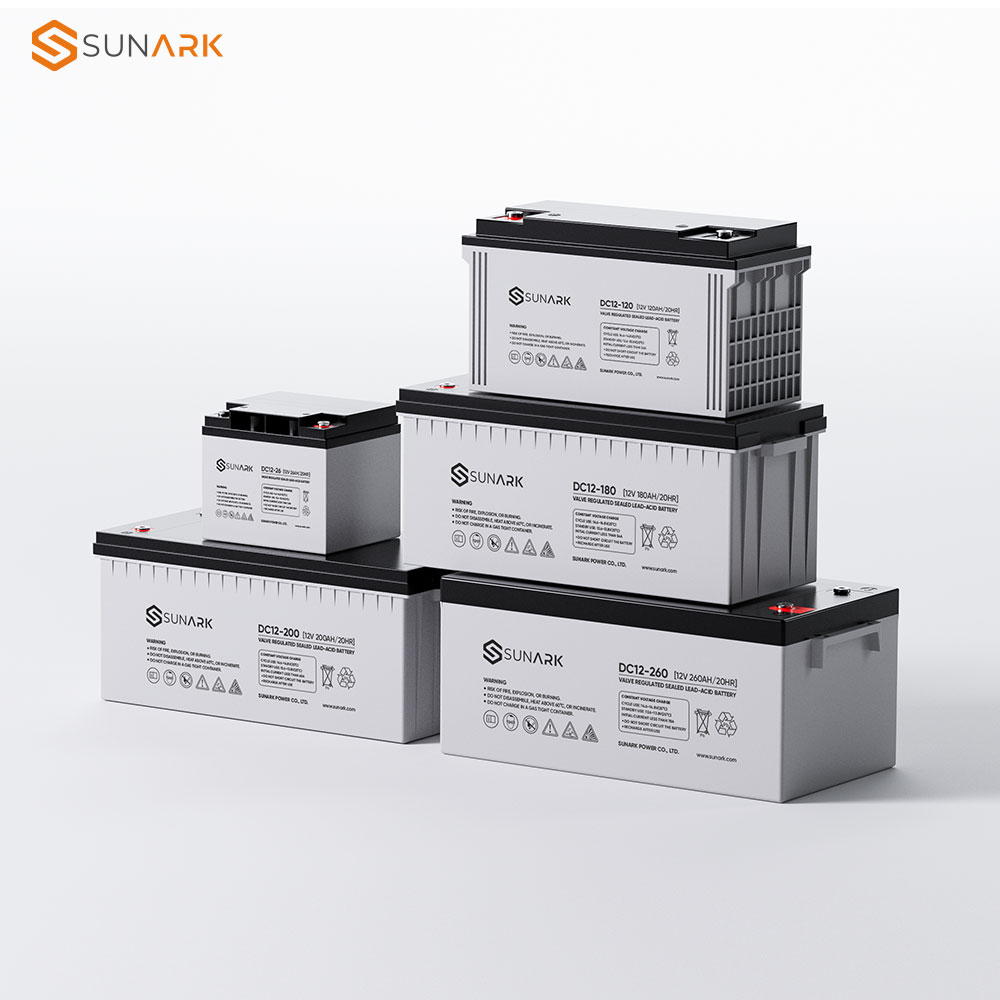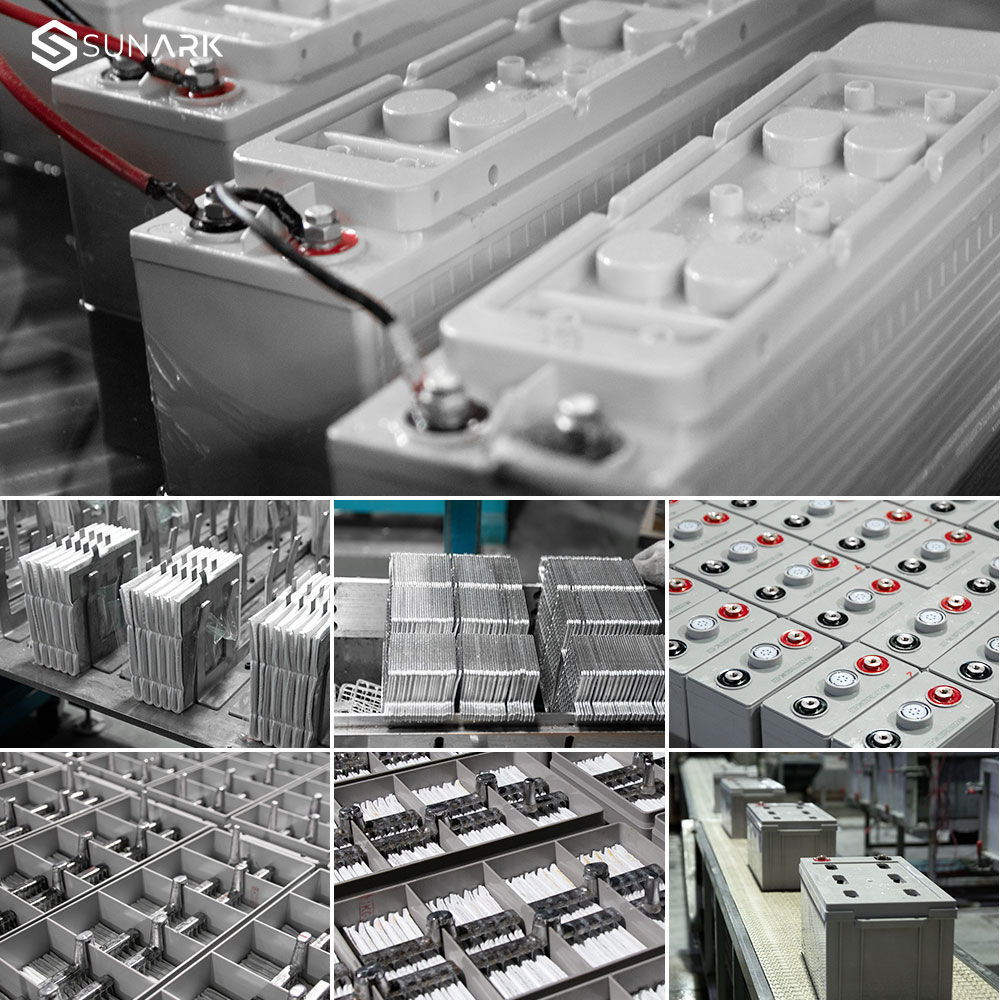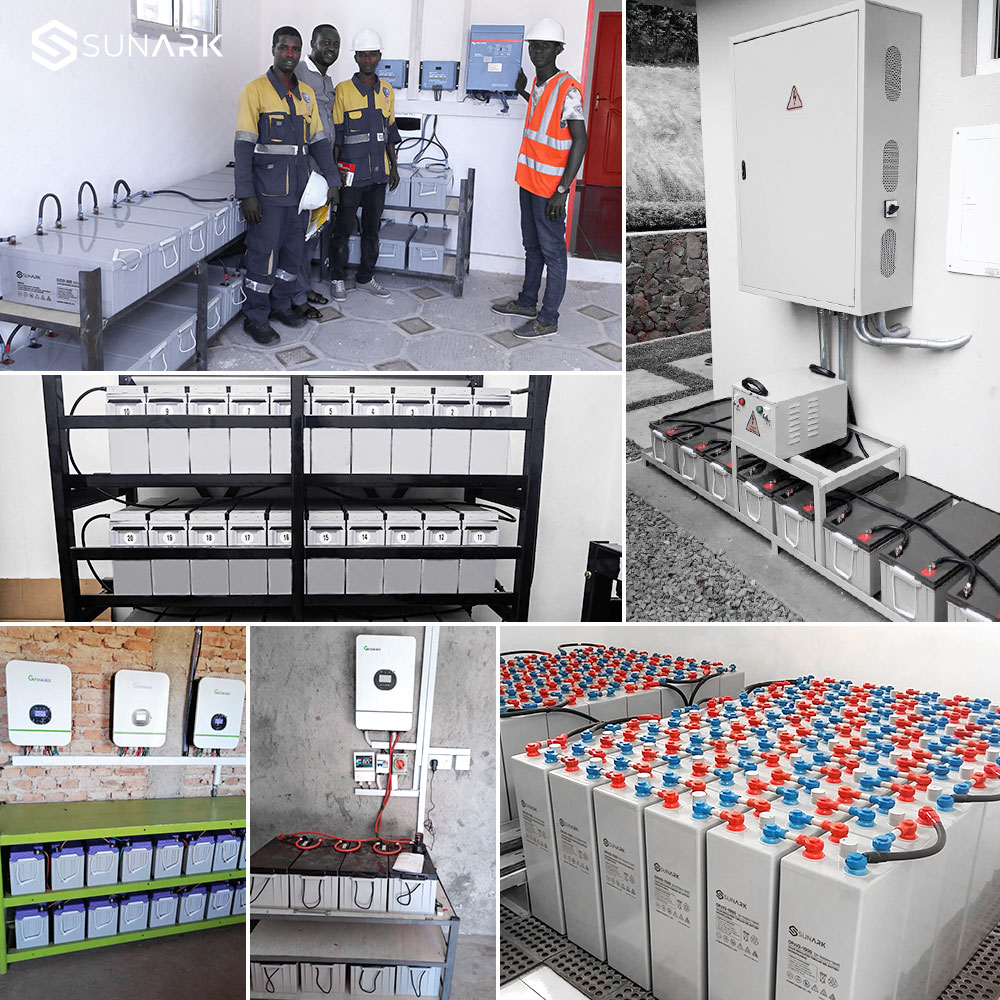SunArk deep cycle AGM series lead acid batteries has combined of good quality and free OEM advantages to the market, which has a design life more than 20 years, and 5 years warranty period.
AGM batteries are commonly used in a variety of applications, including automotive, marine, and renewable energy systems.
Cells Per Unit:
6Voltage Per Unit:
12VDesign Life:
20 years (Float charging)Standby Use Voltage:
13.6V~13.8V @25°CCycle Use Voltage:
14.2V~14.4V @25°COperating Temperature Range:
Discharge: -15°C~50°C Charge: 0°C~40°C Storage: -15°C~50°CNormal Operating Temperature Range:
25°C ± 5°CSelf Discharge:
Monthly Self-discharge ratio is less than 3.5% at 25°C.Container Material:
A.B.S. UL94-HB UL94-V0 OptionalAGM stands for Absorbent Glass Mat, which is a type of lead acid battery. AGM batteries are commonly used in solar systems due to their reliable and maintenance-free operation.
Inside an AGM battery, there are several key components. The battery consists of lead plates (positive and negative), which are immersed in an electrolyte solution made of sulfuric acid. Unlike traditional flooded lead acid batteries, where the electrolyte is freely flowing, AGM batteries use a fiberglass mat to absorb and immobilize the electrolyte, hence the name "Absorbent Glass Mat."
The absorbed electrolyte in the mat provides a stable environment for the chemical reactions to occur during charging and discharging. The mat also acts as a separator between the positive and negative plates to prevent short circuits while allowing the movement of ions.

During the charging process in a solar system, solar panels generate electricity from sunlight, which is converted into usable DC (direct current) power. This DC power is then sent to a charge controller, which manages the charging process and ensures the battery is charged properly. The charge controller regulates the voltage and current to match the battery's requirements.
The charge controller delivers the appropriate charging voltage to the AGM battery, causing a chemical reaction that converts electrical energy into stored chemical energy. This process reverses during discharging. When electricity is needed, the chemical reactions in the battery release stored energy in the form of electrical current.
AGM batteries are known for their low self-discharge rate, deep cycle capabilities, and ability to handle high discharge currents. They are also sealed and maintenance-free, as they do not require adding water or checking electrolyte levels.
In a solar system, AGM batteries are a popular choice due to their durability, resistance to vibration, and suitability for various environmental conditions. They provide reliable storage and supply of electricity, making them well-suited for off-grid or grid-tied solar.

Here's a brief overview of how AGM batteries work in a solar system:
Construction: AGM batteries consist of several components, including lead plates, a fiberglass mat, a separator, electrolyte, and a sealed case. The lead plates are typically made of a lead-calcium alloy, which provides durability and resistance to corrosion.
Electrolyte: AGM batteries use a liquid electrolyte, usually sulfuric acid, that is absorbed by the fiberglass mat. The mat acts as a sponge, holding the electrolyte close to the lead plates while preventing them from touching each other directly.
Absorption of Electrolyte: During the manufacturing process, the fiberglass mat is completely saturated with the electrolyte solution. This design enables the AGM battery to be maintenance-free since the electrolyte is immobilized and cannot spill or leak, even if the battery is positioned at various angles.
Oxygen Recombination: AGM batteries are classified as sealed or valve-regulated because they incorporate a one-way valve mechanism. This valve allows the internal pressure to be relieved if it exceeds a certain threshold. When the battery is charged, oxygen and hydrogen gases are produced through a process called electrolysis. The valve allows the release of excess gases while maintaining internal pressure.
Charging and Discharging: In a solar system, the AGM battery is charged by the solar panels or other charging sources. The charging process converts electrical energy from the solar panels into chemical energy within the battery. This causes a chemical reaction that reverses during discharge, releasing electrical energy to power connected devices or systems.

The manufacturing process for AGM (Absorbent Glass Mat) batteries involves several steps. Here is a general overview of the process:
Lead Preparation: The first step involves preparing the lead, which is a key component of AGM batteries. Lead is melted and cast into lead alloy grids or plates, which will serve as the positive and negative electrodes in the battery.
Separator Preparation: AGM batteries use a fiberglass mat as a separator between the positive and negative plates. The fiberglass mat is soaked in a special electrolyte solution to optimize its performance and allow for efficient ion flow.
Plate Assembly: The positive and negative plates are interleaved with the fiberglass separator material, forming a stack. The stack is typically rolled or pressed together to ensure a compact assembly.
Acid Filling: The plate assembly is inserted into a battery casing or container. Sulfuric acid, which serves as the electrolyte, is then carefully added to the battery container. The acid concentration is controlled to ensure optimal performance and avoid any potential hazards.
Sealing: After filling the battery with acid, the container is sealed to prevent any leakage. The sealing process typically involves heat sealing or using a special sealing compound.
Formation: Once the battery is sealed, it goes through a process called formation. In this step, the battery undergoes a controlled charging and discharging cycle that helps activate and condition the plates and electrolyte. Formation helps optimize the battery's performance and capacity.
Testing and Quality Control: After formation, the batteries undergo rigorous testing to ensure they meet quality standards. This includes checking parameters such as voltage, capacity, internal resistance, and overall performance.
Packaging: Once the batteries pass the quality control tests, they are packaged and prepared for shipment. Packaging includes labeling, boxing, and sometimes adding additional safety features and instructions.
It's important to note that this is a generalized overview of the process. The specific details and steps can vary depending on the manufacturer and the type of AGM battery being produced. AGM battery production is a complex process that requires careful attention to detail and adherence to quality control.
FAQs:
Q1: Do you support OEM/ODM?
A:Definitely, OEM&ODM service is supported with a certain quantity,including customize logo,package and label;
Q2: What's the production time?
A: The production time is normally 15 working days. but we will always prepare some stocks for popular models.
Q3: Can you provide DDP service?
A:Yes, if you are a personal customer and don't want to deal with the customs, we can provide DDP service to your address.
Q4: What about the warranty and how to claim?
A: Warranty period are 10 years since you receive the product, our professional after-sales team will deal with all warranty issues.